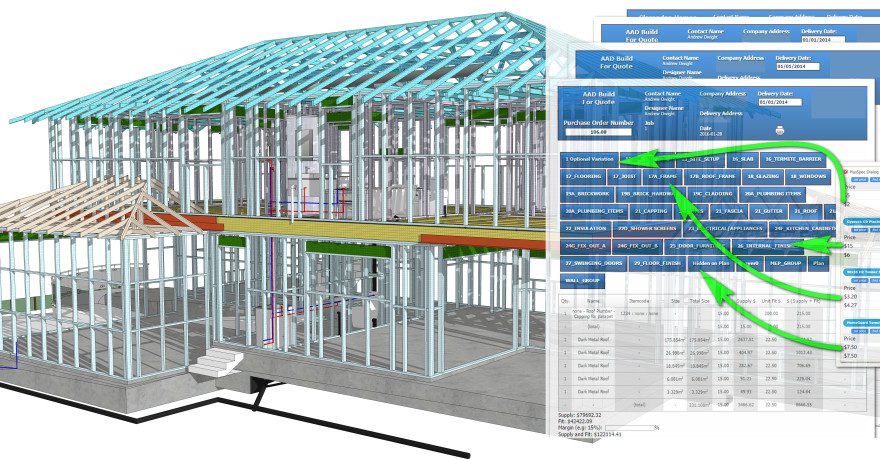How To Create Building Information Modeling For Estimation?

BIM models which includes cost estimation factor of overall projects are termed as 5D BIM models. Adding time frames to project result into 4d bim models. Building Information Modeling technology provides high quality of 3D models along with high level of detailed documentation for overall project cycle. Building Information modeling uses digital way of exchanging data’s through different software’s. BIM technology is found to be effective in finding overall cost estimation of the project with accuracy. Thus cost analysis is considered to be one of the best features of BIM technology which includes cost estimation or quantity take off or Bill of Quantities. Cost analysis is carried out at various stages during overall project cycle. The level of detailing of costing depends upon the stage/phase of project.
BIM Quantities take off Vs Traditional Cost Estimation
Traditional cost estimation method makes use of excel sheets, cad drawings and sometimes it may require pen and paper also. CAD drawing based estimation includes process of crosschecking and tallying the components from drawings manually. This practice of cost estimation occupies mostly 60-70% overall time required to complete the project. Another main disadvantage is it involves number of human errors which makes project rating and firm reputation low. Thus in order to minimize time consumption as well as human errors nowadays most of firm utilizes BIM based cost estimation using software like revit.
Building Information Modeling includes creation of accurate mod
els with all design considerations which results into high quality of BIM model. Cost estimation using BIM can be carried out by generating quantity take off reports automatically in the software. As the reports are directly taken out from high quality BIM model, chances of errors are very fewer. If any changes are further made in model, these changes automatically are incorporated in quantity take off reports created by the software itself. In this way we can carry out cost estimation along with minimizing time and errors with less efforts compared to traditional way of cost estimation.
Cost estimation process can be broadly divided into following phases/stages:
1. Primary / Approximate cost estimate
Primary cost estimates are provided by developing various conceptual ideas in the beginning stage by making use of clients input. Primary cost estimates can be given by estimators by their past projects estimation experience by considering various standards. Thus primary cost estimation takes place during conceptual stage of project.
2. Secondary / Nearby cost estimate
Secondary cost estimate are given by engineers or architects by considering various design standards. These estimates are not accurate all the time but almost nearby the final estimation.
3. Final cost estimate
The final cost estimation takes place at the time of construction and installation at sites which is considered to be accurate and definite.